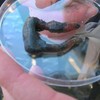Scope for Biology, Biochemistry, Cell Biology, Molecular Biology, Neurobiology.
Dear Community,
I was wondering about the scope of Biochemistry, Molecular Biology, Pure Biology, Neurobiology, Microbiology
Please tell me what you can do with a phD and is Pure Biology financially rewarding? I would also like to know all the pros and cons of each.. if you coudl do this for me I would be eternally grateful.. I am an undergrad and trying to find out which major to go to..
gundrukbhaat - you can do lots of things with any major ke!!! uffffff!!!! just study what you like and i am sure you'll be able to find something ke!!! that's why colleges have stuff like you can make up your own major and stuff ke!! hare don't you know??
but if you are like talking about the money part of your major then hmm.....i don't really know but i'd love to know too ke! :) :)
now you made me curious too!!!
and hmm..if i were you i would go for biochemistry but that's just because i love chem ke! :)
by the way i wanted to say this earlier when i saw your nick but i'll say it now ke: i love your nick ke and i wanted to eat it ke!! i haven't had gundrukbhaat for a long time ni! :(
Dude, that was funny.......
Nails, are you running for the post of Dumb Blonde of Sajha?
I jest, hai, don't come scratch me with those... ahem... nails.
Chatmandude - what was so dumb about my post? :S i don't get it! :(
god damn..!! holy crap ..Biochemistry, Molecular Biology, Pure Biology, Neurobiology, Microbiology has no prospect at all. Why hell you chose to go that way ...!!
biochemistry is the best i guess it terms of job market. molecular biology is also good: go and develop some vaccine for HIV, and get rewared with Nobel Prize. good luck!!!
mero limitation chhai
molecular biology, genetics and biomedical engineering. i luv them all.
what do i know about them
G-A-A-C-T-A-C-R-A-A-A-R and bunch of C-H-O and few numbers (O:
to me R used to be Resistors now its puRine C used to be Capacitors now its Cytosine and Boltzman's was just a probability now its in GENETICS ... dyamn.. never thought that I could use that damn K in amino acids.. i mean LYSINE...
===================================================
as always
what do I knoe (O:
Go for Behavior study, tons of money in it as everyone goes carzy...
Aging population, depleting resources, unbalanced nature...accumulated wealth--it has to darin somewhere..into your sacks...
Nails, that was nice way to express your desire for Gundruk-Bhat, I would love to have a thal of it, but ladies first...
Any phd students want to comment on this please??

Gundrukbhaat,
Biochemistry, Microbiology is indeed a very rewarding field of studies. It requires intense, hard work and patience. If you are focusing on financial reward right after your undergrad degree, then there might be some other options (Business??). Industry microbiology/Biotechnology is one of the fields that have been much talked about recently. Though you can get an entry level with a BS, however higher degree is preferred in all of the majors you listed.
All majors ( microbio, molecular bio, biotech, cell Bio) includes basic research, product development such as vaccines, genetic engineering is another topic that has been highly talked about.
In a nutshell, if you have passion for science, then go for it!! You are getting a head start by exploring pros and cons. Go to seminars at your school, talk to your professors, and work in their labs if possible to get hands on and know if it is something you wanna do in a long haul. There is intl. biomedical society banner in the right corner of sajha's homepage that may interest you.
Good luck,
Jyotsna
are you talking about pros and cons after you finish study?
well if you are going to do PHD ,do in anyone of them you mention, if you love research thats good, well after finishing , you can either be researcher and teach or can work in industry, reasearch is intersting thing where you will learn lots of new things,every experiment will make you think lot,you can design your own research,but i don't feel like writing grants every year and worry about grants every year if i were to become professor , that's me but i don't know about you, some people do enjoy writing grants and doing reasearch..the best thing is after finishing study just shoot for industry.....
Gundrukbhaat Ji,
Regarding your inquiry, you might be able to get some advice from the International Nepali Biomedical Society (INBS) website (www.nepal-biomed.org). You can also see rotatining in the right top corner of SAJHA page. This society aims to help and bring together people interested in Biomedical Sciences (Biochemistry, Microbiology, Neuroscience,....) and Biotechnology. You might be able to get some information from resource section and you can post your questions in its forum.
Good comments you made Jyotsana Ji and ss74k ji.
Good luck.

Science 14 December 2001:
Vol. 294. no. 5550, pp. 2293 - 2294
DOI: 10.1126/science.1067477
Prev | Table of Contents | Next
Policy Forum
CAREERS:
Competition and Careers in Biosciences
Richard Freeman,* Eric Weinstein, Elizabeth Marincola, Janet Rosenbaum, Frank Solomon
The rapid progress of biomedical research should be rewarding young scientists with bright careers. Instead, the National Research Council (NRC) reports a "crisis of expectations" as career opportunities fall short of those in comparable occupations. Our analysis suggests that the inconsistency between scientific promise and career prospects arises from how life scientists are trained and how their careers are structured and funded rather than from a short-term supply-demand imbalance. Improvements will require reforms in training and career structure and in funding support for young researchers.
Most of the approximately 150,000 Ph.D. life scientists in the United States work at colleges and universities, where the Federal government is the major single source of biomedical research funding. Government influences the supply of researchers through policies on postdoctoral fellowships, research assistantships and admission of students and scientists from abroad. It influences the demand for research activity through federally funded research grants.
University bioscience research is "little science," where laboratories resemble small family businesses (1). A typical research laboratory is run by a principal investigator (PI), whose name is attached to the laboratory. The PI is responsible for choosing research topics, raising money, juggling budgets, and managing postdocs and graduate students. The PI relies on postdoc and graduate student workers motivated by the hope of achieving an independent research career and making important contributions, rather than monetary incentives. Students and postdocs depend on the laboratory for education, career development, and income.
The Tournament Model
Research in the biosciences fits a tournament economic structure. A tournament offers participants the chance of winning a big prize--an independent research career, tenure, a named chair, scientific renown, awards--through competition (2). It fosters intense competition by amplifying small differences in productivity into large differences in recognition and reward. Well-structured tournaments stimulate competition. Because the differences in rewards exceed the differences in output, there is a disproportionate incentive to "win." Victory may result from being marginally better than competitors, e.g., completing a key experiment a week earlier.
This configuration puts enormous competitive pressure on PIs, because the slightest edge can make the difference between success and failure. Many PIs respond to the possibility of being "scooped" by working long hours. Nearly one-third of Ph.D. biological scientists work 60 or more hours per week compared with 24% of other Ph.D. scientists (3). Bioscience Ph.D.'s aged 35 to 44 work about 50 hours per week. The long hours especially impact those balancing career and family. Among Ph.D. biologists without children, women work more hours than men, but among those with children, women work many fewer hours than men. The decrease in hours worked by mothers damages career progression in the biosciences because of the field's rapid progress, one indicator of which is the median number of years of journal citations (citation half-life). Biosciences have the shortest citation half-life among all sciences, making it difficult to pause from or reduce work and return to the same career trajectory as before (4).
Data from the National Science Foundation document the link between work hours and scientific success. Between 1990 and 1995, bioscientists published 6.7 papers per year compared with 4.7 papers for scientists in other fields. In bioscience, 5 hours of work per week is associated with one additional publication, and each publication corresponds to approximately 0.9% higher salary. Bioscientists who work more hours publish more, and those who publish more, earn more.
Consequences
Ideally, tournament job markets are socially efficient, inducing high productivity from all participants. They are most likely to optimize effort when each participant has a reasonable chance of winning. Biology fits this model: Many researchers have sufficiently similar scientific talent and equipment to make a big discovery. When a new technology or idea appears, many scientists with similar research experience can grab the "low-hanging fruit." If the chance of being first to make an extraordinary finding rises with increased effort, researchers have a strong incentive to invest in that effort.
However, tournaments can also produce perverse outcomes. The tournament model creates the incentive to publish quickly and to recruit as many postdoctoral fellows as possible, irrespective of the personal value of their training. One PI we interviewed said: "If I have three postdocs and we work all the time, I have a bigger chance of getting my results out first than if I have two postdocs and I take off weekends." The small businessperson might have said, "if I keep the store open late and on weekends, I will attract customers from my competitor who doesn't." Senior scientists may recognize that they and their students should take more time for their personal lives, but they adapt to their incentives, and the tournament incentive is clear.
Similarly, PIs recognize that graduate students and postdocs often struggle economically. But as long as cheap postdoc or graduate student labor is available, PIs will use them as their primary labor input. If encouraging graduate students and postdocs to specialize narrowly helps PIs win the research tournament, this will occur even if alternative forms of training, or leaving the lab sooner, might better serve the students and postdocs. If PIs cannot attract postdoctoral fellows from the United States or institutions cannot attract qualified graduate students, they widen their search geographically or lower admission standards. Mixing training and work inevitably links the supply of biology graduates to the demand for work in laboratories.
Lifetime Earnings
The long duration of graduate and postgraduate training and low rate of pay give bioscientists lower lifetime income than people in other careers that require high levels of education. In the 1990s, the median length of time between entry into a life science Ph.D. program and graduation with a degree was 8.0 years. The median time in postdoctoral training was 3.8 years. In 1970, the total time was under 10 years. Thus, many bioscientists do not obtain their first professional salary until their mid-30s. For funding agencies, a tournament structure that generates good research by employing idealistic young graduate students and postdoctoral fellows at low cost is an effective use of taxpayer dollars.
Career Information and Supply
The response of students to the inconsistency between scientific promise and career prospects depends on their information. NRC panels concerned with disgruntled young researchers invariably recommend that students receive greater information about career prospects (5). To see whether departments have been responsive, we contacted 10 leading biology departments. No department had job placement data available. Three said that they kept track of long-term outcome data for training grant reports, but that the data were confidential. In contrast, the professional schools (law, business, medicine) at some of the same institutions tracked careers of graduates and readily provided data on starting salaries and jobs.
To measure how undergraduates assess career opportunities, we surveyed nearly 100 Harvard students enrolled in the main bioscience majors' course. Ten percent thought that they had an excellent chance of obtaining a tenure-track job. Over 50% said that salary and/or a more secure career path would make a bioscience career more appealing. The many students who learned about the job market from graduate students and postdoctoral fellows had predominantly negative impressions about career prospects. Most said they discussed the job market with their family, and here, too, the negative impressions far outweighed the positive (6).
Still, from 1989 to 1998, the proportion of Ph.D.'s granted in biosciences increased. It increased largely among women, whose share of bioscience degrees rose from 37.5 to 43.3% and among non-U.S. citizens, whose share rose from 19.8 to 26.2%. Why in the face of poor career prospects has the field increased its supply of students relative to other Ph.D. fields? Intellectual allure may have trumped financial considerations for many students over this period. But the change in the demography of entrants and our undergraduate data suggest that this is only part of the story. Increased recruitment of noncitizens and changed admission standards to meet the labor requirements of research laboratories also affected supply. This has profound implications for the potential of market forces to improve bioscience careers. If departments can enroll graduate students and hire postdocs from the potentially large supply of bright foreign students, the natural reduction in supply that otherwise would occur when job prospects worsen (7) will not happen. Because there is no evidence that demand will grow so rapidly as to outpace the growth of supply, we conclude that without significant policy intervention, the tournament market incentives will perpetuate the current structure, benefiting senior investigators at the expense of new entrants. No single PI or institution, however well-meaning, can alter this dynamic. Any substantive change in the structure of the bioscience job market must be developed collectively and be supported by the National Institutes of Health and other funders.
Recent developments suggest that reforms are likely. The NIH response to the NAS report, "Addressing the Nation's Changing Needs for Biomedical and Behavioral Scientists (8) showed that the Agency takes seriously the evidence on the career problems of young bioscientists, and the need to improve career prospects for them. Accordingly, the agency has promised to increase postdoctoral and grad student stipends; and has endorsed "the concept that post-doctoral trainees should be converted to non-training staff or faculty positions at the earliest practical opportunity ... with appropriate levels of income and benefits ... [and] that such costs be built into future competing applications (8)." The growing unionization of graduate students, moreover, which has spread from state universities like the University of Washington to private universities such as NYU, as a result of National Labor Relations Board decisions that these students have the rights of workers to form unions, is altering traditional relationships between universities and student employees.
Structural reforms could ameliorate the tournament-style job market (8). The proportion of federally supported graduate students receiving fellowships or grants can be increased gradually from its late 1990s rate of 26% to the 50 to 60% rate of the mid-1970s, thereby giving more trainees greater control over their careers. Funding agencies can offer fellowships that reward excellent graduate students with support at the end of their doctoral training so that they can launch their early careers. Similarly, agencies could provide funding to selected postdocs, 2 or 3 years into their research, to help them establish their own laboratories and achieve independence earlier. Compensation for postdocs could be raised to a level commensurate with the age and training of these professionals, for instance by setting postdoctoral stipends as a proportion of starting salaries for new assistant professors. An increase in stipends for starting postdocs to, say, 75% of starting academic salaries would raise the NIH stipend by about $10,000. The pay of postdocs with 1 year's experience could then be proportionately increased to, say, 80% of the starting academic salary, and so on, so that a fifth-year postdoc would earn the going market rate for an assistant professor. Finally, the NIH can allocate funds to support scientists who wish to do research without becoming PIs, thus directly addressing structural flaws in the training system.
Such changes, adopted by prominent investigators, leading departments, and funding agencies, can reduce the risk that poor career prospects and inadequate economic rewards may cost science the engine of its success, our the nation's and the world's most promising young people.
My main question was which among the majors is better financially: Biochemistry, Molecular Biology, Pure Biology, Neurobiology, Microbiology. Some people tell me that pure biology - like physiology is very poor interms of financial rewards.. I have to decide on a major right now so I am asking this because I love research and I want to do phd right after I graduate from college...
Sorry! I forgot to thank all the people with nice suggestions. Thank you all and please tell me more like I wrote in the previous post of this thread.. (the one right above this..)
Please log in to reply to this post
You can also log in using your Facebook

You might like these other discussions...













